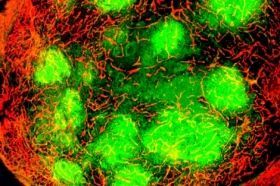Using novel approaches to examine exactly how oncolytic viruses attack tumors, the new study – published online in early form on Dec. 19, 2017, and in print in the Feb. 15, 2018, issue of Cancer Research – provided surprising insights about how a viral infection can cooperate with the immune system to attack cancer cells. The study highlights an opportunity to combine this form of therapy with cancer immunotherapy drugs such as checkpoint inhibitors, which unleash the immune system’s full cancer-fighting power, the researchers say.
The idea that viruses could fight cancer goes back to the early 20th century, when doctors noted that cancer patients sometimes experienced dramatic remission after getting viral infections. Researchers have been developing oncolytic viruses since the 1980s, but following the U.S. Food and Drug Administration’s 2015 approval of Amgen’s Imlygic (T-Vec) as the first oncolytic viral therapy in the U.S., such viruses have become a closely watched area of therapeutic development.
However, researchers are still trying to understand the fundamentals of how viral therapies actually kill cancer cells, and how to optimize their effects. In different contexts, viruses appear capable of attacking tumors in a number of different ways – by directly infecting them, by releasing tumor proteins that trigger a broad immune response against the cancer, and by damaging the blood supply tumors need to survive.
Read more at University of California – San Francisco
Image: A tumor with green patches of vaccinia virus infection surrounded by red blood vessels. (Credit: Donald McDonald Lab)


